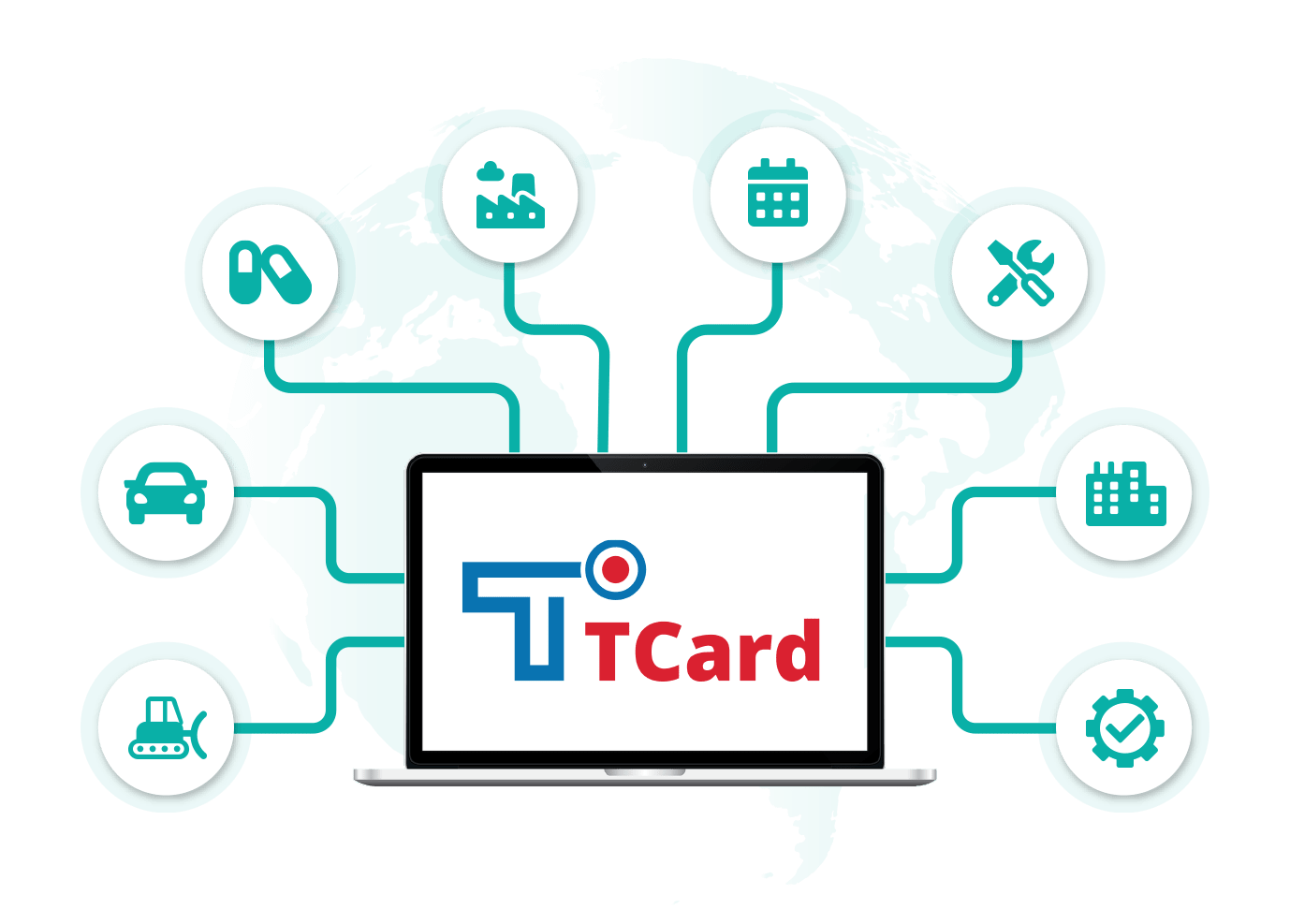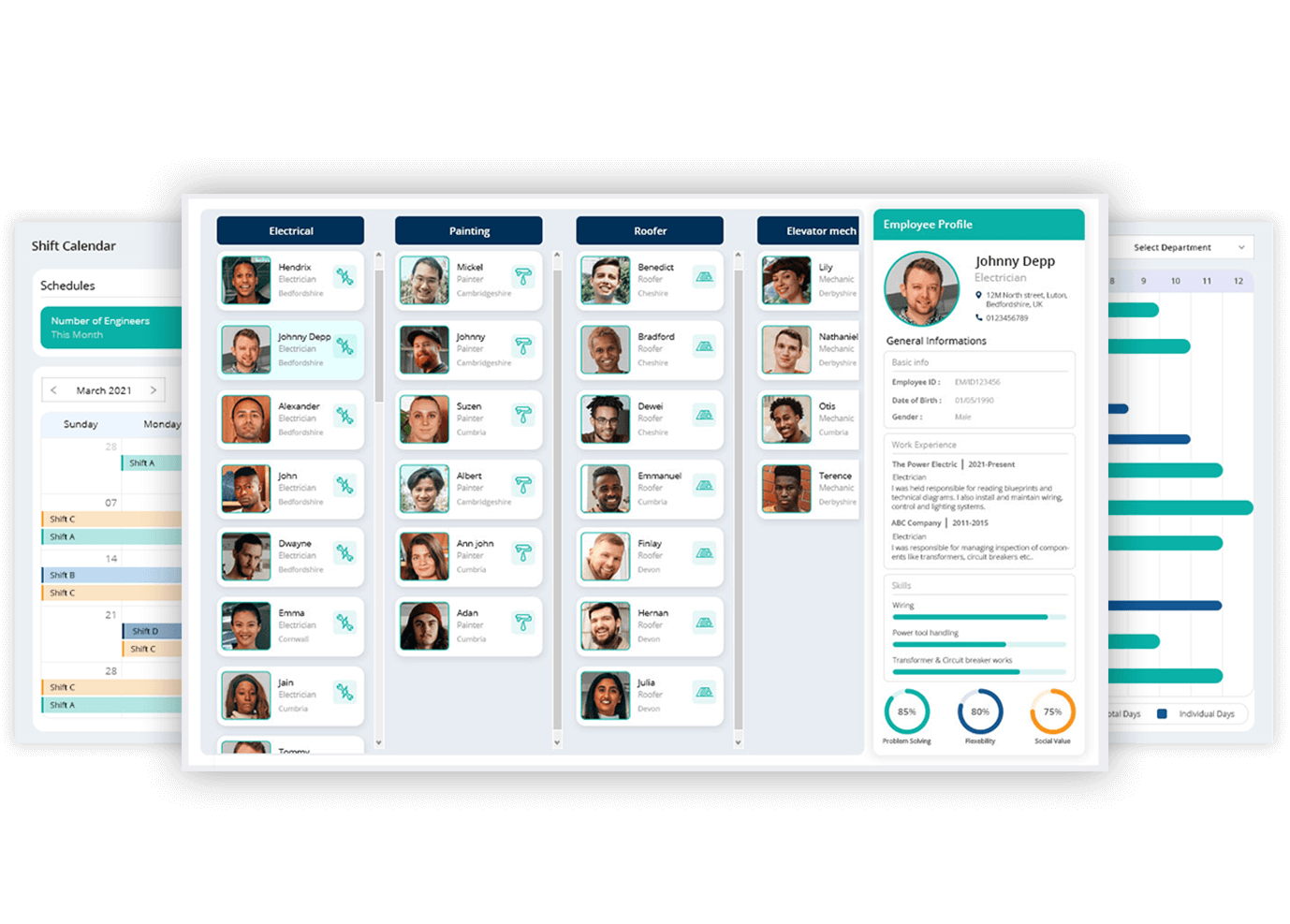
Resource Management is Easier With Digital
T Cards
Identify and allocate resources according to the assigned task or activity.
Start Free Trial Watch VideoTrusted Partner for Businesses
Across the World
Irrespective of industries, Digital T Card Software enhanced their business processes.
Manage Multiple Resources Effectively
Resource management is the process of utilising various resources effectively to get a job done. The resources can be workforce, equipment, materials, vehicles etc. Digital T Card manages multiple resources effectively in a single dashboard.
- A single calendar view for workflow management
- Get highlights on over and under-utilised resources
- Avoid scheduling conflicts and employee burnout
- Manage employee unavailability
- Customised fields to capture resource data
- Analyse past resource usage patterns to forecast future needs
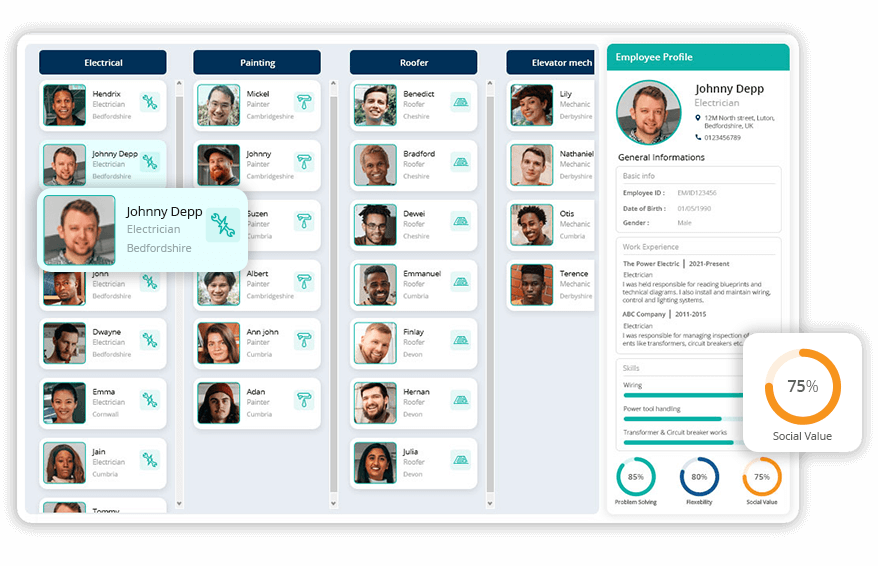
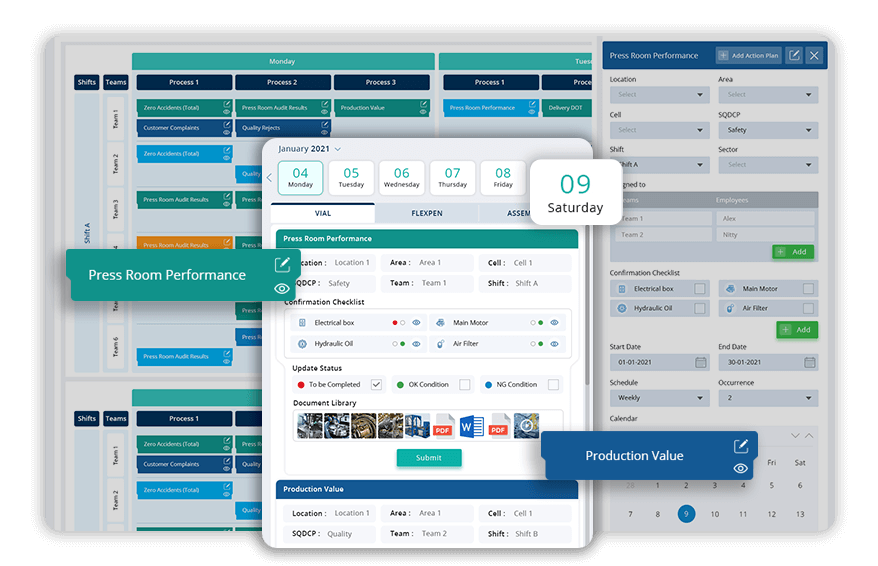
Identify and Allocate Resources
Identify and allocate resources according to the assigned task or activity. Identify the available resources and their current status to plan future tasks. Proper allocation of resources saves time and reduces costs.
- Analyse resource capacity to meet project demand
- Check real-time resource availability
- Find the right people and resources easily
- Automate allocation based on predefined criteria
- Ensure seamless communication for resource allocation adjustments
- Receive instant updates on resource status changes
Effective Resource Planning
Planning in important is resource management to avoid confusion as the task progresses. Keep track on the availability of resources. The T card calendar gives an overview of resources and their statuses.
Read More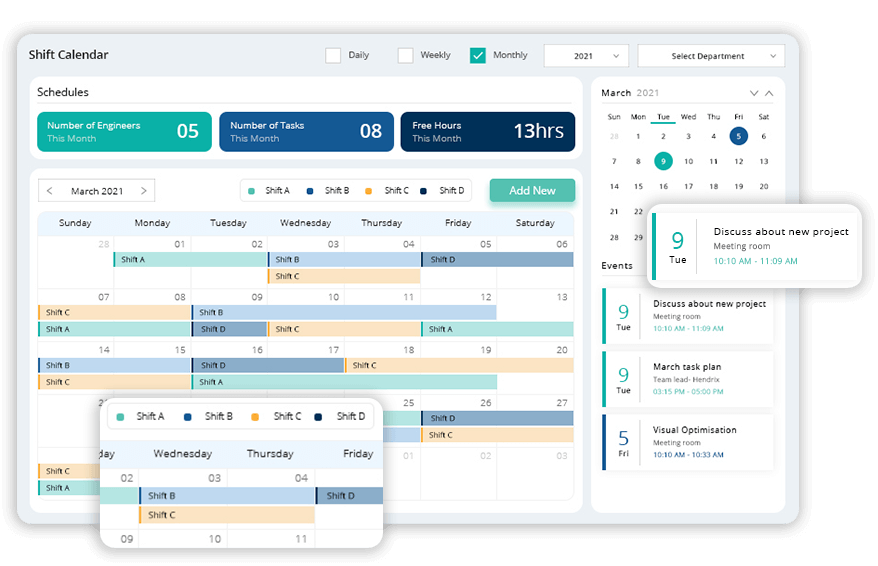
How Digital T Cards Help You?
Digital T cards are the best visual management tool to streamline and optimise all tasks and processes. No more excel and paperwork. Keep track of your work digitally.
Start Free Trial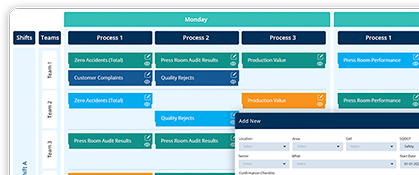
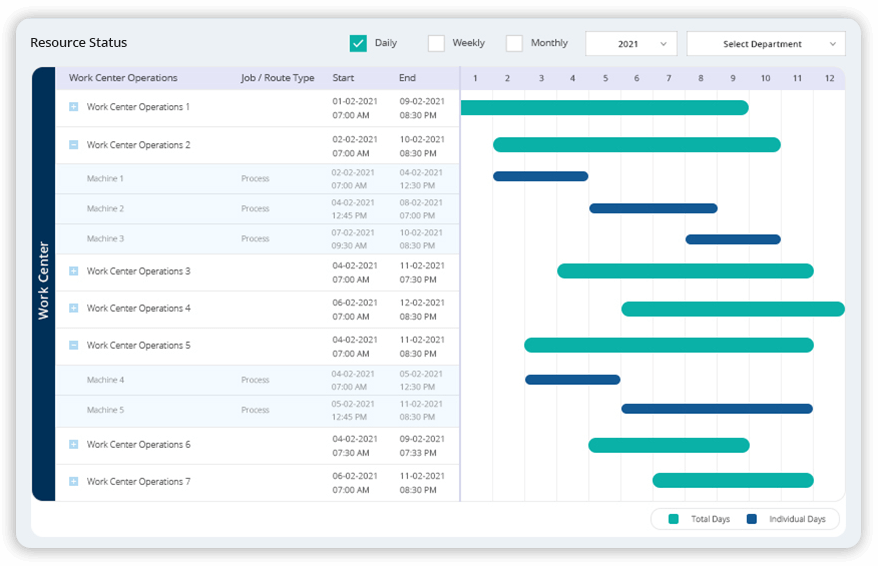
Record Resource Status
Get detailed information on available, assigned and de-mobilised resources. Tracking resource status will help in the allocation process. Those resources which are de-mobilised can be replaced or sent for further maintenance.
Resource History
Get detailed history notes on each resource, the task they were working on, working hours, task completion details and much more. Evaluate the efficiency of each resource by analysing resource history.
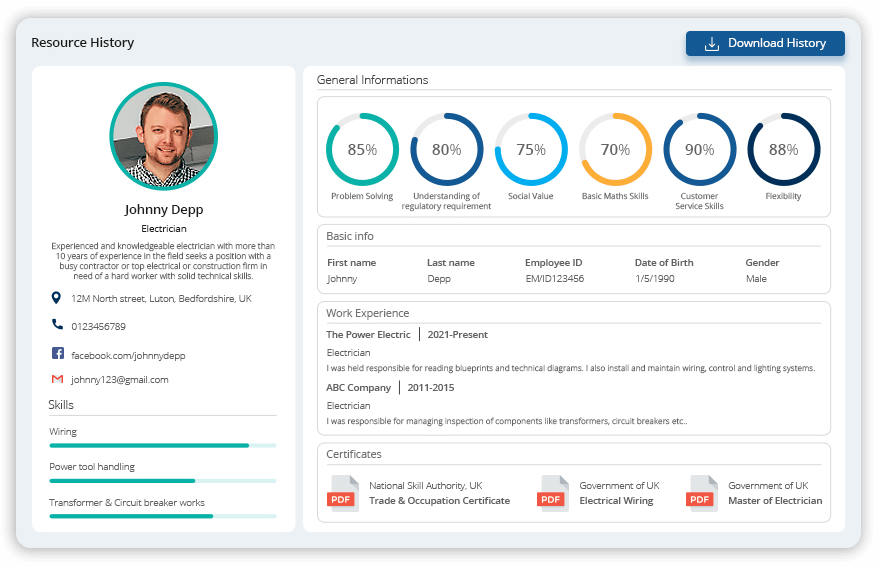
Auto-Generated Reports
Get multiple, downloadable reports. Get reports on resources and their effectiveness. Identify the most efficient resource from these reports and implement actions to improve performance of other resources.
- Configure reporting colours to highlight relevance
- Get cost, revenue & profit reports based on resource utilisation
- Use scheduling reports to make informed decisions
- Dedicated Timesheet reports
- Reports on planned v/s actual employee performance
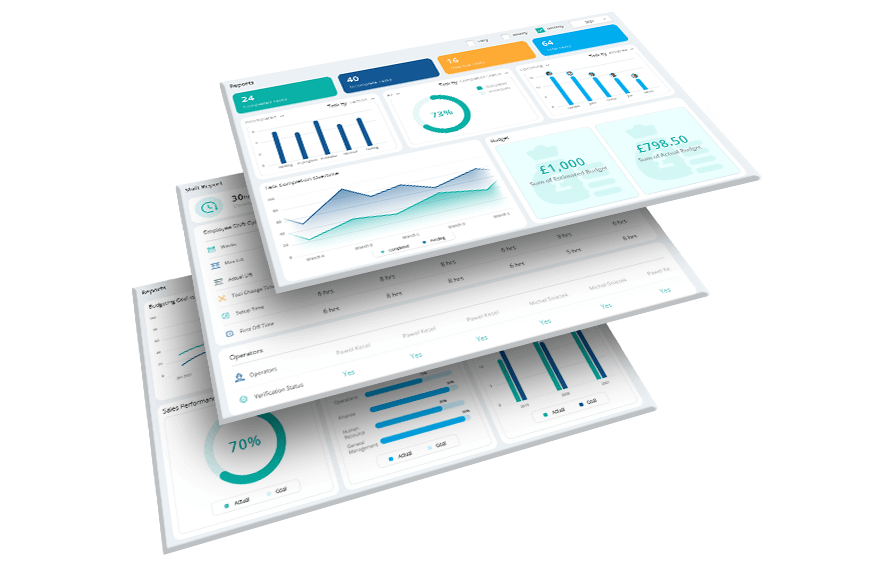
Contents
- What is Resource Scheduling, and how does it optimise Project Management?
- What are the benefits of using a T card system for Multi-Resource Scheduling?
- Why do manufacturers implement Visual Scheduling tools in Resource Management and Scheduling?
- How do you implement Resource Management?
- How does a resource management system help create and manage employee shift calendars?
- What is the significance of a resource management plan in project scheduling and allocation?
- How does resource management software aid manufacturers in handling complex workflows?
- Is there a way to remotely manage resources using T cards?
- What customisation options are available to tailor the resource management software to specific project needs?
- Can the resource management software generate reports and analytics after performance evaluation?
- Can resource scheduling T cards be integrated with other project management tools?
- How does resource scheduling software contribute to cost control in project management?
- Example for Resource Scheduling Software application
What is Resource Scheduling, and how does it optimise Project Management?
Resource scheduling is a crucial aspect of project management that involves effectively allocating and managing the available resources, such as services, labour, equipment, materials, money, time, and space, to accomplish project tasks within specified timeframes. The primary goal of resource scheduling is to ensure that resources are utilised efficiently, avoiding conflicts and bottlenecks and ultimately optimising the overall project management process. There are two approaches for managing schedules in situations where resources are constrained by both time and capacity: resource smoothing, also known as time-limited resource scheduling, and resource levelling, alternatively termed resource-limited scheduling.
Let's understand how resource scheduling contributes to project management optimisation:
Optimal Resource Allocation:
Resource scheduling helps project managers allocate resources based on their skills, availability and the requirements of specific tasks. Resource forecasting is essential for effective resource planning and scheduling, as it provides insights into the resources available for allocation. Projects can progress smoothly and efficiently by assigning the right resources to tasks at the right time.Conflict Avoidance:
Projects often involve multiple tasks that may require the same set of resources. Without proper scheduling, conflicts can arise when resources are double-booked or stretched too thin. Resource scheduling helps identify potential conflicts and allows adjustments to prevent overloading resources.Improved Efficiency:
By having a clear overview of resource availability and task dependencies, project managers can optimise the sequence of tasks and allocate resources to minimise downtime. This leads to improved efficiency and faster project completion.Budget Control:
Resource scheduling contributes to better budget management by preventing unnecessary costs associated with delays, overtime, or inefficient resource utilisation. By having a well-defined schedule, project managers can control expenses more effectively.Enhanced Communication:
Resource scheduling facilitates communication within the project team. Team members are aware of their deadlines, responsibilities and the availability of resources, which promotes collaboration and coordination.Flexibility and Adaptation:
With a comprehensive resource schedule, project managers can track real-time progress and make timely adjustments for optimal project management. If unexpected issues or delays occur, managers can quickly identify alternative resources or adjust timelines to maintain project momentum.Risk Management:
Effective resource scheduling includes contingency planning for unexpected events. This proactive approach to risk management ensures the project team is prepared to address challenges and uncertainties without compromising the project timeline.
What are the benefits of using a T card system for Multi-Resource Scheduling?
T cards excel as the best resource scheduling software for large-scale projects, offering a user-friendly and visually intuitive system. Their adaptability and simplicity make them the optimal choice for efficiently managing resources in extensive project environments.
Real-Time Monitoring of Resource Utilisation:
Project managers can quickly assess resource availability, usage, and potential overloads at a glance through colour-coded or labelled T cards, facilitating swift recognition of assignments and aiding in the prevention of overallocation or conflicts.Visual Representation of Employee Shift Calendar:
T cards are colour-coded or labelled to represent different shifts or working hours. Team members can easily view their assigned shifts and identify absences, promoting better team coordination.Efficient Time Management:
T cards provide a straightforward way to manage and track the time allocated to specific tasks. This time-tracking feature helps ensure that resources are allocated appropriately and project timelines are adhered to.Facilitate Short-term and Long-Term Planning:
T-cards visually represent resource allocation over an extended period, such as weeks or months, allowing project managers to make informed decisions for project timelines through effective resource planning.Customisation to suit any project:
T card systems can be easily customised to meet specific project needs. The cards can represent different types of resources, tasks, or project phases, allowing for a tailored approach that aligns with the project's unique requirements.
Why do manufacturers implement Visual Scheduling tools in Resource Management and Scheduling?
Manufacturers implement visual scheduling tools, like T cards, in resource management and scheduling to enhance clarity, improve communication, and streamline the allocation of resources. Visual scheduling tools provide:
- A clear and intuitive representation of resource utilisation.
- Helping teams easily understand task assignments.
- Dependencies.
- Overall project progress.
This visual approach facilitates efficient decision-making, minimises conflicts, and enhances collaboration, ultimately contributing to more effective resource management in manufacturing processes.
How do you implement Resource Management?
-
step 1
Commence by initiating resource planning and employing data-driven allocation strategies.
-
step 2
Strategically prepare for uncertainties in the resource management process.
-
step 3
Implement techniques for optimising resource utilisation to enhance efficiency.
-
step 4
Monitor and manage the workload of resources effectively.
-
step 5
Ensure the alignment of employees' competencies with project requirements.
-
step 6
Foster engagement and motivation among team members for improved collaboration.
-
step 7
Utilise T cards as a visual tool for effective resource management and allocation.
How does a resource management system help create and manage employee shift calendars?
A resource management system facilitates the creation and management of employee shift calendars by providing a centralised platform for scheduling, optimising workforce allocation, and ensuring efficient coverage. The system enables supervisors to easily assign shifts based on employee availability and skills through features like drag-and-drop scheduling, real-time visibility, and automated notifications. This not only enhances workforce planning but also minimises scheduling conflicts. Additionally, the system's data analytics capabilities allow for strategic planning, helping organisations align employee schedules with peak demand periods and improve overall operational efficiency.
What is the significance of a resource management plan in project scheduling and allocation?
A resource management plan is essential in project management as it serves as a strategic guide for optimising available resources for scheduling and allocation purposes. This plan outlines a systematic approach to allocate, identify, and manage resources throughout the project lifecycle, including personnel, equipment, and materials. Providing a clear resource allocation framework minimises conflicts, ensures optimal utilisation, and enhances overall project efficiency. The resource management plan is instrumental in preventing resource bottlenecks, mitigating risks, and maintaining project timelines, ultimately contributing to the successful execution of projects within specified constraints.
How does resource management software aid manufacturers in handling complex workflows?
Resource management software assists manufacturers in handling complex workflows by providing a centralised platform for planning, scheduling, and allocating resources. For example, resource management softwares like T cards can analyse production requirements, employee skills, and equipment availability in a manufacturing industry to create a detailed schedule. It ensures that tasks are assigned to the most qualified personnel and that machinery is utilised efficiently. This comprehensive approach minimises bottlenecks, optimises resource utilisation, and adapts to real-time changes, allowing manufacturers to navigate intricate workflows seamlessly and enhance overall operational effectiveness.
Is there a way to remotely manage resources using T cards?
Yes, T cards for resource management offer a remote access option, allowing users to manage resources from any device. This feature also assures flexibility and convenience, enabling authorised access only. With T cards, access can be restricted, even across team members. T cards provide hassle-free resource scheduling, planning, allocation, and management from any location worldwide. The system ensures both mobility and security for efficient and controlled resource management practices.
What customisation options are available to tailor the resource management software to specific project needs?
T card software provides extensive customisation options to tailor the resource management system to specific project needs. Users can define and modify T cards to represent various resources, tasks, and project phases, adapting the system to the unique requirements of each project. Customisable fields, colours, and categorisations empower users to design a resource management system that optimally fits the specific demands and complexities of their projects, ensuring effective and efficient project planning and execution.
Can the resource management software generate reports and analytics after performance evaluation?
Resource management software generates reports and analytics to measure project success and identify bottlenecks. By leveraging the data collected during the resource management process, resource management softwares like T cards can provide valuable insights, aiding in strategic decision-making and continuous improvement initiatives. The generated reports offer a detailed overview of resource utilisation, project timelines, and team performance, facilitating a data-driven approach to optimise future resource planning and allocation.
Can resource scheduling T cards be integrated with other project management tools?
T card systems are designed to seamlessly integrate with various project management systems, or MES and ERP systems, to enhance collaboration and provide a unified platform for comprehensive project oversight. This integration allows for data synchronisation, enabling real-time updates and eliminating the need for manual data entry across different tools. By connecting resource scheduling T cards with other management systems, teams can streamline communication, improve coordination, and ensure a more holistic and efficient approach to project planning and execution.
How does resource scheduling software contribute to cost control in project management?
T card systems can be designed with integration capabilities, allowing seamless connectivity with various tools and systems commonly used in industries, such as Enterprise Resource Planning (ERP) systems. This integration enhances efficiency by enabling data sharing and real-time updates between different platforms, providing a holistic view of project and resource information. This process synchronises resource scheduling with other industry operations for a more streamlined workflow.
Example for Resource Scheduling Software application
Resource management software is a versatile solution applicable across diverse industries such as Manufacturing, Automotive, Energy, Healthcare, Construction, Pharmaceuticals, HVAC, and more.
Let's consider an example of using Resource scheduling software in a Plant hire company.
A Plant Hire industry specialising in construction equipment rental faced challenges coordinating availability, maintenance, and operator schedules. They implemented resource scheduling software to streamline operations and enhance the efficiency of their industry. The software helped improve overall processes within the rental industry in the following ways:
Equipment Inventory Management
- The software maintains a comprehensive database of all available equipment, including specifications, maintenance history, and current status ( available, rented, under maintenance).
- Users can easily view the availability of specific equipment over a specified period.
Customer Booking Portal
- Clients can access an online portal to check equipment availability, request quotes, and make bookings.
- The software automatically updates the system, ensuring real-time availability of information.
Automated Scheduling
- The software includes a scheduling module that considers equipment availability, ongoing bookings, and maintenance schedules.
- It automatically generates optimised schedules, reducing conflicts and maximising equipment utilisation.
Maintenance Scheduling
- The system alerts maintenance teams about upcoming service requirements based on equipment usage and operating hours.
- Preventive maintenance schedules are generated to minimise downtime and extend the lifespan of the equipment.
Operator Management
- The software manages the schedule and availability of operators, ensuring that skilled personnel are assigned to operate specific equipment.
- It considers factors like operator certifications and expertise when making assignments.
Real-time Tracking
- GPS tracking and sensors on equipment provide real-time location and usage data.
- Managers can monitor the status of ongoing projects, equipment movements, and schedule adherence.
Reporting and Analytics
- The software generates reports on equipment utilisation, maintenance history, and operator performance.
- Analytics tools provide insights for decision-making and future planning.
Start 14 Days Free Trial
T cards are a simple and effective tool to track and record various processes in any business. Irrespective of industries, all organisations benefit from t cards.
